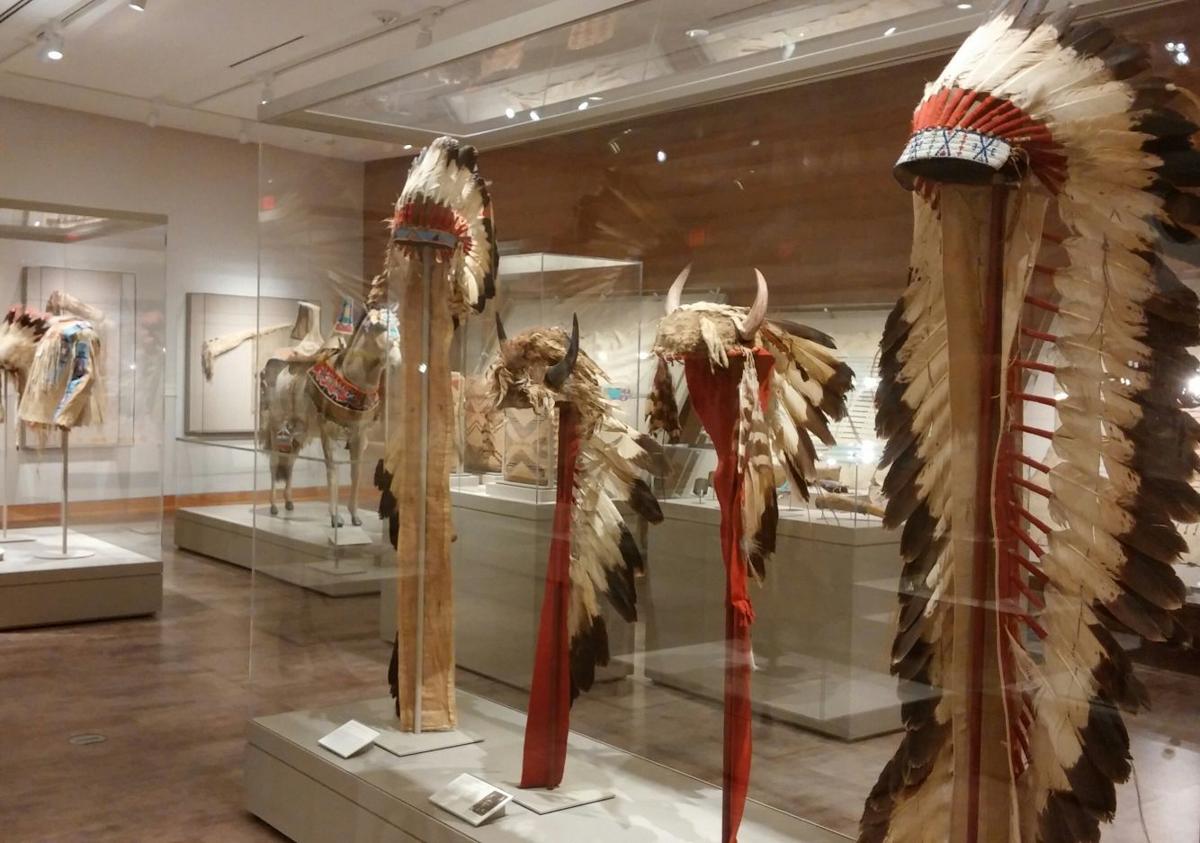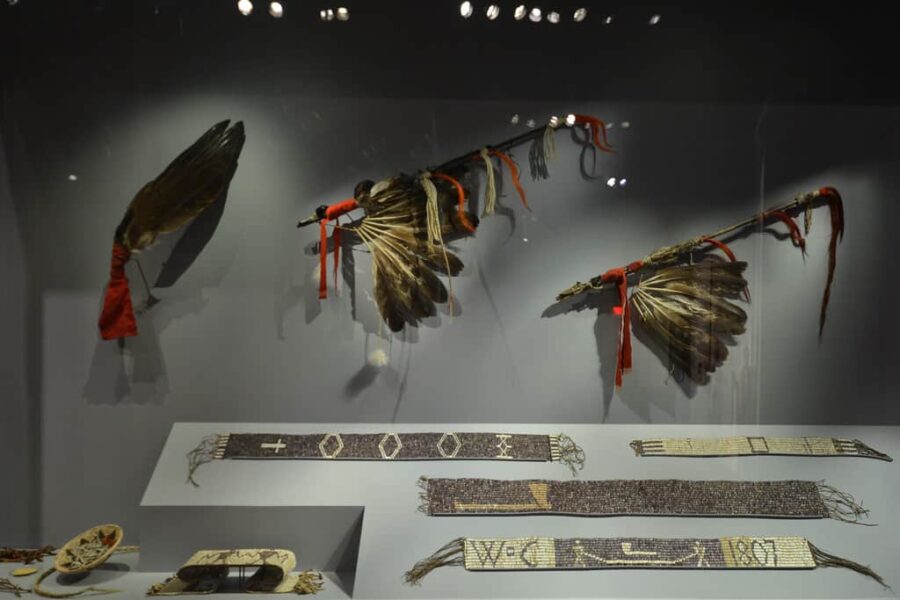
Navigating the Indigenous Narrative: What to See First at a Native American Museum
Abstract:
Visiting a Native American museum offers a profound opportunity to engage with the rich, diverse, and complex histories, cultures, and contemporary realities of Indigenous peoples across the Americas. However, the sheer volume of information, coupled with pre-existing societal biases and historical misrepresentations, can make the initial approach daunting. This article provides an in-depth, educational, and scientifically informed guide on "what to see first" at a Native American museum. It argues that the primary "first step" is not merely a physical location within the museum, but rather an intellectual and ethical framework that visitors should adopt before, during, and after their engagement with the exhibits. By prioritizing a decolonized mindset, understanding fundamental Indigenous principles, and strategically navigating introductory exhibits, visitors can foster a more respectful, insightful, and transformative learning experience.
Introduction: Beyond the Artifacts – A Mindset First Approach

A Native American museum is not merely a repository of ancient artifacts; it is a dynamic space for storytelling, cultural affirmation, historical reckoning, and contemporary dialogue. For many visitors, the initial impulse might be to immediately seek out visually striking objects, historical weaponry, or traditional attire. However, to truly comprehend the depth and significance of what is presented, the most crucial "first thing to see" is not an exhibit but an internal shift in perspective. This approach emphasizes that effective engagement begins with deconstructing preconceived notions and cultivating a receptive, critical, and respectful mindset. This foundational mental preparation allows visitors to interpret the physical exhibits within their proper historical, cultural, and socio-political contexts.
I. The Overarching Mindset: Deconstructing Preconceptions and Embracing Indigenous Perspectives
Before even physically stepping into the primary exhibition halls, visitors should mentally prepare by adopting a series of critical perspectives that challenge common misconceptions about Native American cultures. This intellectual "first look" is paramount.
A. Embracing Diversity, Not Monolithicity:
The term "Native American" encompasses hundreds of distinct sovereign nations, each with unique languages, spiritual beliefs, governance structures, artistic traditions, and ecological adaptations. The most pervasive misconception is that Indigenous peoples constitute a single, homogenous entity. Therefore, the very first conceptual understanding a visitor must grasp is the immense diversity inherent within Native American societies. Recognize that the museum likely represents a fraction of this vast tapestry, and no single institution can encapsulate it all. This understanding immediately combats generalization and fosters an appreciation for individual tribal identities.
B. Recognizing Continuity and Resilience, Not Just History:
Another pervasive stereotype is that Native American cultures exist solely in the past, often relegated to the pre-contact era or the 19th century. This "vanishing Indian" narrative is profoundly damaging and inaccurate. The "first thing to see" conceptually is that Indigenous cultures are vibrant, dynamic, and continuously evolving in the present day. Look for evidence of cultural persistence, adaptation, and revitalization. Understand that Indigenous peoples are not merely historical subjects but are living communities actively shaping their futures, maintaining traditions, and contributing to contemporary society.
C. Understanding Sovereignty and Self-Determination:
Indigenous nations are inherently sovereign entities with inherent rights to self-governance and self-determination. The historical trajectory of Native American peoples is not solely one of conquest and victimhood, but also one of enduring sovereignty, resistance, and resilience. The "first thing to see" is the recognition of this political status. This perspective reframes the narrative from one of passive subjects to active agents in their own histories and futures.

D. Prioritizing Indigenous Voices and Epistemologies:
For centuries, the narratives about Native Americans were predominantly told by non-Native anthropologists, historians, and colonizers, often through a lens of exoticism, romanticism, or conquest. The "first thing to see" is the centrality of Indigenous voices and perspectives. Seek out exhibits curated by Native people, narratives told in first person, and interpretations grounded in Indigenous epistemologies (ways of knowing). This shift is crucial for decolonizing the museum experience and ensuring authenticity.
II. Strategic Museum Navigation: The "First Steps" Inside the Institution
Once the foundational mindset is established, visitors can strategically approach the physical layout of the museum to maximize their understanding.
A. The Orientation Zone and Introductory Exhibits:
Most well-designed Native American museums will feature a dedicated orientation zone or introductory gallery near the entrance. This is the prime physical "first thing to see." These areas are specifically designed to provide essential context and should not be rushed through. Look for:
- Welcome and Land Acknowledgement: Many museums begin with a welcome in Indigenous languages and a land acknowledgment, recognizing the ancestral lands upon which the museum stands and honoring the Indigenous peoples who are the traditional stewards of that land. This immediately grounds the visit in Indigenous sovereignty and presence.
- Regional Maps and Timelines: A large-scale map illustrating the vast geographical distribution of diverse Indigenous nations (both historically and contemporarily) is invaluable. Complementary timelines that span from deep pre-contact history to the present day help to visualize the immense chronological scope and continuity of Indigenous cultures. These tools reinforce the diversity and longevity of Native American presence.
- Museum Mission and Curatorial Statement: Understand the museum’s stated mission. Does it emphasize collaboration with Indigenous communities? Does it aim to challenge stereotypes? Does it focus on a specific region or period? This provides insight into the institution’s pedagogical approach and its commitment to Indigenous voices.
- Foundational Narratives/Thematic Overviews: These initial exhibits often present overarching themes such as Indigenous origin stories, relationships with the land, the concept of kinship, or the spiritual interconnectedness of all life. Grasping these foundational philosophical tenets is crucial for understanding the deeper meaning of subsequent cultural expressions.
B. Thematic Galleries Prioritizing Foundational Understanding:
After the initial orientation, prioritize galleries that offer broad foundational understanding before diving into highly specific or technical exhibits.
- Regional and Cultural Diversity Exhibits: Seek out sections that explicitly showcase the differences between various cultural groups, perhaps organized by geographical regions (e.g., Northwest Coast, Plains, Southwest, Eastern Woodlands). These exhibits will illustrate how environment, resources, and historical interactions shaped distinct cultural practices, art forms, and social structures.
- Historical Trajectories: From Deep History to the Present: While tempting to focus on "ancient" history, look for galleries that present a comprehensive historical arc. This includes:
- Pre-Contact Eras: Showcasing the sophisticated societies, agricultural innovations, trade networks, and complex spiritual systems that existed prior to European arrival.
- Contact and Colonial Eras: Addressing the profound and often devastating impacts of colonization, including disease, forced displacement, treaty negotiations (and breaches), and the fight for survival. This section should also highlight Indigenous agency and resistance.
- 19th and 20th Century Challenges: Covering periods like the reservation era, assimilation policies (e.g., boarding schools), and the ongoing struggle for land rights and self-determination.
- Contemporary Realities: Crucially, dedicate time to exhibits that address modern Indigenous life, including cultural revitalization efforts, political activism, economic development, and contemporary art. This reinforces the idea that Indigenous peoples are vibrant, modern communities.
C. Engaging with Contemporary Realities:
Make a conscious effort to find and spend time in sections dedicated to contemporary Indigenous life, art, and political issues. This actively counters the "past tense" narrative and highlights the resilience, adaptability, and ongoing contributions of Native American communities today. Look for modern art installations, documentaries featuring contemporary Indigenous voices, discussions of current events, and examples of cultural revitalization.
III. Beyond the "First Gaze": Deepening the Experience
After establishing a foundational understanding, the museum visit becomes an iterative process of deeper engagement:
- Read Exhibit Labels Critically: Pay attention to who created the exhibit, who is quoted, and the language used. Look for Indigenous perspectives and narratives.
- Engage with Multimedia: Watch videos, listen to oral histories, and interact with digital displays that often provide richer context and personal stories.
- Attend Programs and Tours: Many museums offer guided tours led by Indigenous educators or host special events, lectures, and performances that provide direct engagement with Native American culture.
- Visit the Museum Store (Critically): If purchasing items, seek out authentic Native-made crafts or books by Indigenous authors. Avoid generic "Indian-themed" souvenirs.
- Reflect and Research: Allow time for reflection. What questions arose? What stereotypes were challenged? Consider further research on specific nations or topics that piqued your interest.
Conclusion: A Journey of Continuous Learning
The question of "what to see first" at a Native American museum transcends mere physical navigation. It is fundamentally about adopting an informed, respectful, and decolonized mindset. By prioritizing the understanding of Indigenous diversity, continuity, sovereignty, and the centrality of Native voices, visitors lay a robust intellectual foundation. Subsequently, strategically engaging with the museum’s orientation zones and thematic exhibits that span deep history to the present day reinforces this understanding. Ultimately, a visit to a Native American museum should be seen not as a singular event, but as the beginning of a continuous journey of learning, reflection, and respectful engagement with the enduring legacy and vibrant future of Indigenous peoples.


